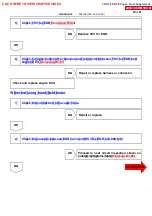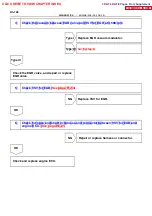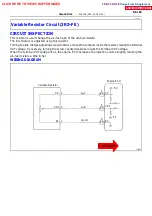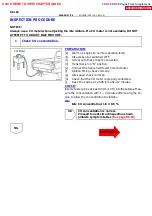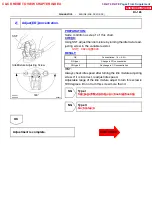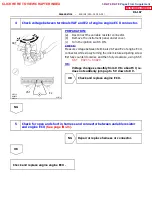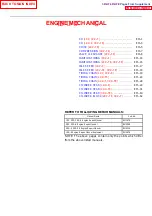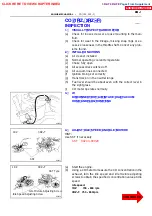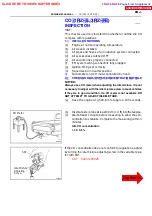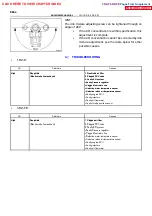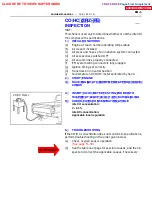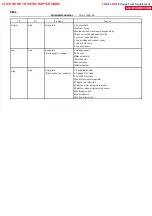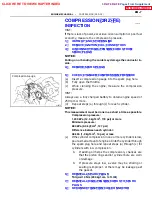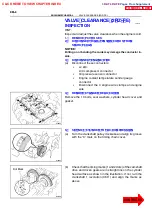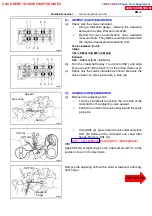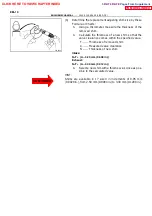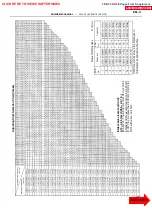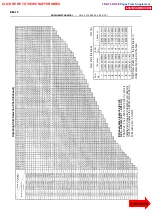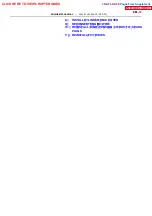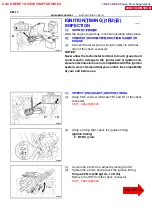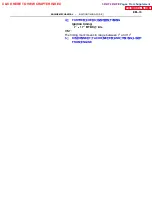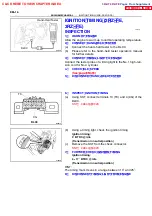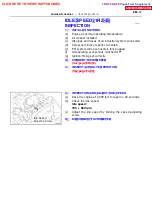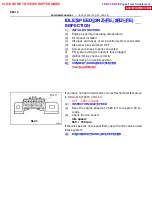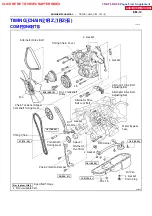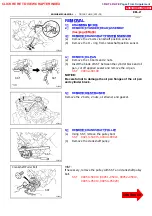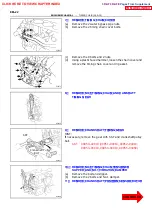
EM08R--01
P15972
Compression Gauge
--
ENGINE MECHANICAL
COMPRESSION (2RZ--FE)
EM--7
COMPRESSION (2RZ -- FE)
INSPECTION
HINT:
If there is lack of power, excessive oil consumption or poor fuel
economy, measure the compression pressure.
1 . WARM UP AND S TO P E NG I NE
2. RE MOVE IGNITION COIL CONNE CTORS
3 . DI S CO NNE CT HI G H -- TE NS I O N CO RDS FRO M
S PARK P L UG S
NOTICE:
Pulling on or bending the cords may damage the conductor in-
side.
4 . RE MO V E S PARK P L UG S
5 . CHE CK CY LI NDE R CO MP RE S S I O N P RE S S URE
(a)
Insert a compression gauge into the spark plug hole.
(b)
Fully open the throttle.
(c)
While cranking the engine, measure the compression
pressure.
HINT:
Always use a fully charged battery to obtain engine speed of
250 rpm or more.
(d)
Repeat steps (a) through (c) for each cylinder.
NOTICE:
This measurement must be done in as short a time as possible.
Compression pressure:
1,230 kPa (12.5 kgf/cm
2
, 178 psi) or more
Minimum pressure:
880 kPa (9.0 kgf/cm
2
, 127 psi)
Difference between each cylinder:
98 kPa (1.0 kgf/cm
2
, 14 psi) or less
(e)
If the cylinder compression in one or more cylinders is low,
pour a small amount of engine oil into the cylinder through
the spark plug hole and repeat steps (a) through (c) for
cylinders with low compression.
S
If adding oil helps the compression, chances are
that the piston rings and/or cylinder bore are worn
or damage.
S
If pressure stays low, a valve may be sticking or
seating is improper, or there may be leakage past
the gasket.
6 . RE I NS TALL S PARK P L UG S
Torque:
19 N
∙
m (200 kgf
∙
cm, 14 ft
∙
lbf)
7 . RE I NS TALL HI G H -- TE NS I O N CO RDS TO S PARK
PLUGS
8 . RE CO NNE CT I G NI T I O N CO I L CO NNE CTO R
CLICK HERE TO VIEW CHAPTER INDEX
Pages From Supplement
3RZ-F,3RZ-FE

